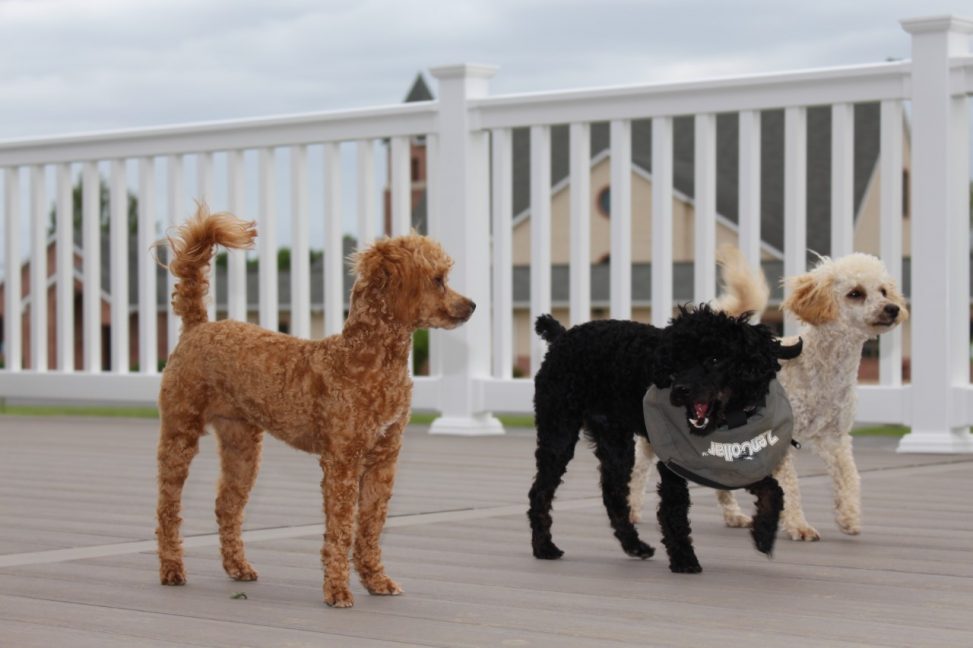One of the most interesting things about language is the way people cater it to who they are talking to. Whether you are a teacher raising your voice to get a classroom of kids to listen or a man using formal language to speak to an interviewer the way we interact with the world around us affects how the world reacts to us.
When a baby is learning how to speak, they learn syllable by syllable, word by word. It is a slow process that takes years to perfect. To assist babies in forming the connections needed to understand and speak language we instinctively try to make the language more appealing by slowing down as we speak. The high pitch of our voice catches the baby’s attention and the slow tempo allows babies to hear each word individually.
In the experiment discussed in the passage, “Dog-directed speech: why do we use it and do dogs pay attention to it?” experimenters looked to investigate factors affecting how humans speak to dogs as well as the dog’s reactions. To do this, they took a group of participants and instructed them to speak to a picture of a dog. The dogs varied in age from puppies to dogs of old age. They analyzed these recordings and discovered that people spoke to dogs using “dog-directed” speech with dogs of any age but used a higher pitch when speaking to pictures of puppies. They found that when listening to playbacks, puppies reacted strongly to high pitch and dog-directed speech, with a high pitch being especially important to gain their attention. Older dogs on the other hand did not react differently to regular speech vs dog-directed speech. This begs the question as to why we continue to speak to older dogs this way. It was theorized that we speak this way in an attempt to interact with non-verbal listeners such as babies to unconsciously encourage them to learn the language.
After reading this, I decided that my interview for this post would be about dog directed speech. I spoke to Professor Jodie Vann about her dogs and her tendency to use dog directed speech with them. Professor Vann has three dogs and they are all toy poodles. There is one boy and two girls, and they are all one year or younger. I asked her if she found herself using dog directed speech with her dogs and she stated that she uses it all the time. She explained that since they are all so young and being trained, they respond to lower tones when they are getting in trouble. I found this interesting because most research behind dog directed speech only talks about the experimenters using a high pitch tone to get attention, not a low pitch tone to reprimand. Although she most often changes her voice to get the dogs to listen, Professor Vann explained that it is while playing with the dogs that she’ll find herself using the typical high pitched “dog voice”. Professor Vann explained that she speaks to “cuter” dogs with a dog directed tone more than tougher or more “serious” looking dogs. This is to be expected as dogs with gentler features can have a more infant like face rather than dogs with harsh aggressive features. Seeing as she talks to more smiley dogs with a higher voice it makes sense that Professor Vann also speaks to infants with the same tone of voice as she would a puppy or cute dog. Professor Vann was extremely helpful and a pleasure to speak with. She shed valuable real-life insight on dog directed speech and how we as humans innately have a tendency to change our tone of voice when speaking to dogs. Overall, it was a very helpful interview and assisted me in seeing firsthand how people use dog dictated speech and the dogs they choose to use it on.
Works Cited: Ben-Aderet T, GallegoAbenza M, Reby D, Mathevon N. 2017 Dog-directed speech: why do we use it and do dogs pay attention to it? Proc. R. Soc. B 284: 20162429. http://dx.doi.org

Leave a Reply